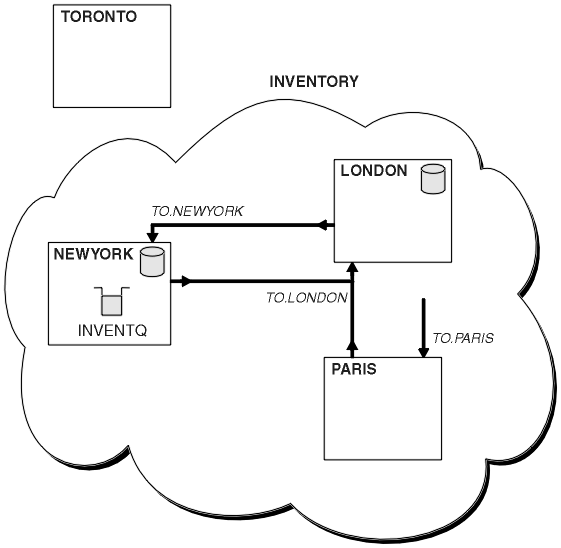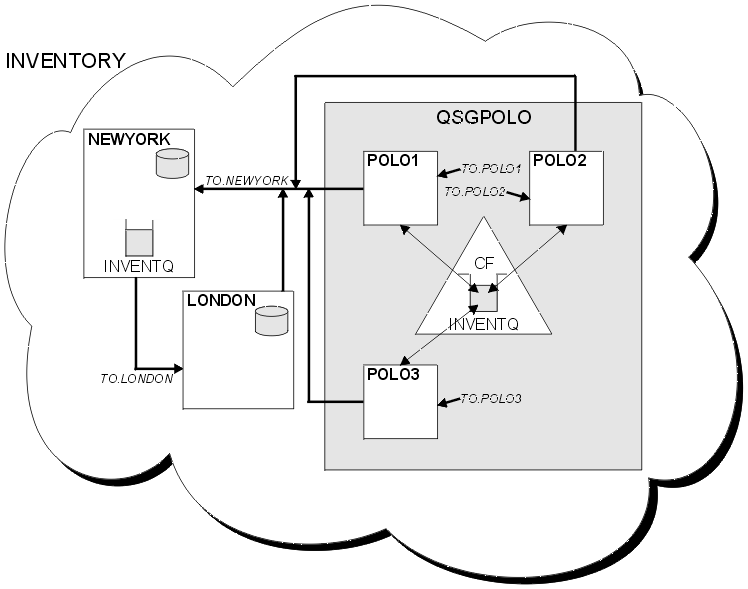8. Issue the REFRESH CLUSTER command
Issue the REFRESH CLUSTER command to remove any auto-defined cluster channels:
REFRESH CLUSTER(INVENTORY) REPOS(YES)Attention: In this scenario, you know that you no longer want to carry out any inventory work at Toronto and so you know that we can remove the TORONTO queue manager from the cluster permanently. If you might want to reintroduce the TORONTO queue manager to the cluster within 30 days, issue the REFRESH CLUSTER command without the REPOS(YES) parameter:REFRESH CLUSTER(INVENTORY)The cluster set up by this task looks like this:
Figure 1. The INVENTORY cluster, with TORONTO outside the cluster
The queue manager TORONTO is no longer part of the cluster. However, it can still function as an independent queue manager.
This modification to the cluster was accomplished without you having to make any alterations to the queue managers NEWYORK, LONDON, and PARIS.
Queue sharing groups behavior: On z/OS, if the queue manager you remove from a cluster has queues that belong to a queue sharing group, it can still process messages put to the shared queues as normal.
For example, suppose a cluster consists of the following 4 queue managers:
- POLO1 (full repository)
- POLO2 (full repository)
- POLO3 (partial repository)
- POLO4 (partial repository)
In this cluster, the cluster queues belong to a queue sharing group:
The cluster set up by this task looks like this:
In this cluster, you process a number of messages to completion as a benchmark. Then, to take one of the queue managers holding a partial repository out of the cluster, you perform the following steps:
- Suspend the queue manager
- Alter the CLUSRCVR channels to have CLUSTER(' ')
- Stop and delete the CLUSRCVR channels
- Stop and delete the CLUSSDR channels
When you reprocess the same messages as a test, the queue manager that was removed from the cluster is still able to process messages put to the shared queues.
If you add this queue manager back into the same cluster, issue the REFRESH CLUSTER command on the queue manager you are adding, after you have defined the cluster sender and cluster receiver channels.
Parent topic:
Procedure
qc12220_
Home

